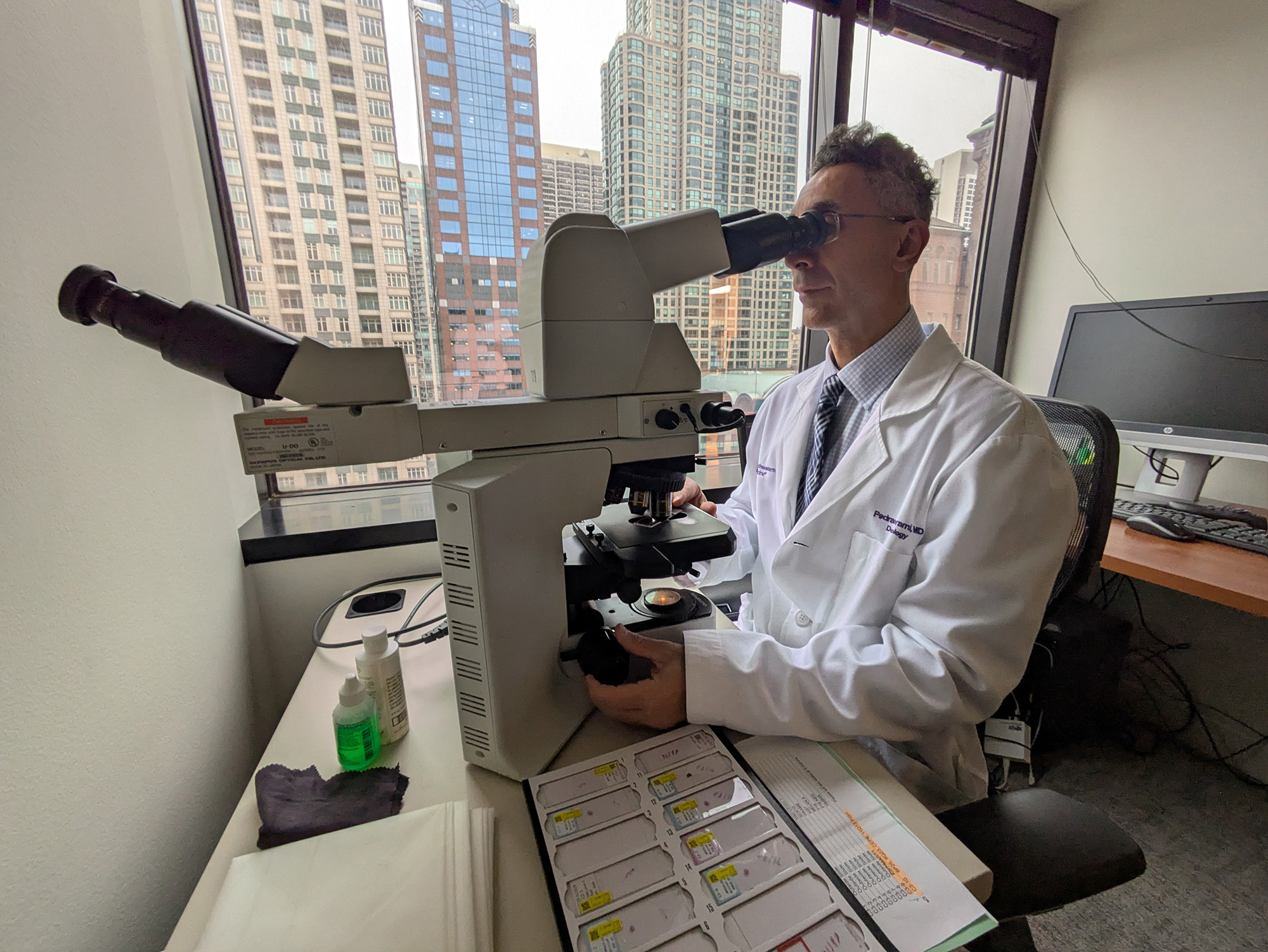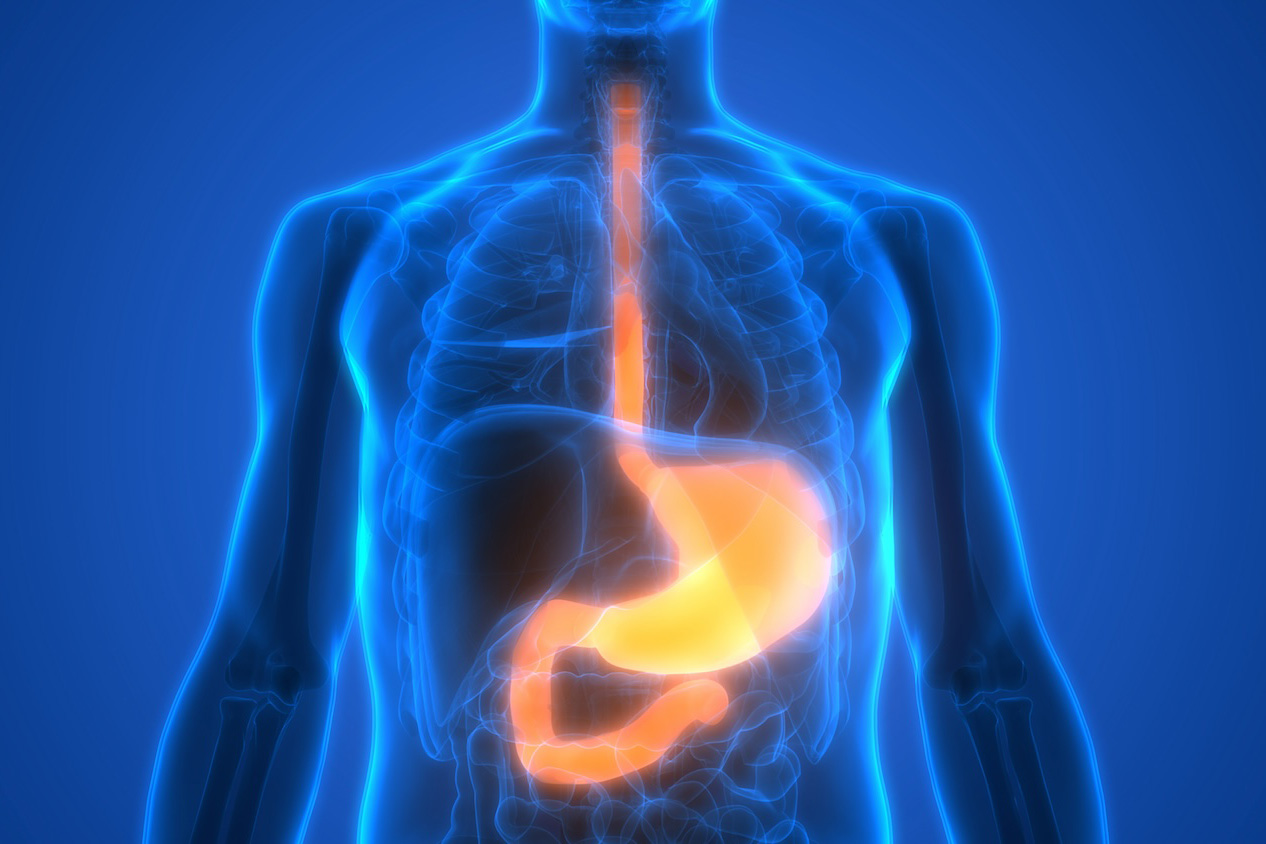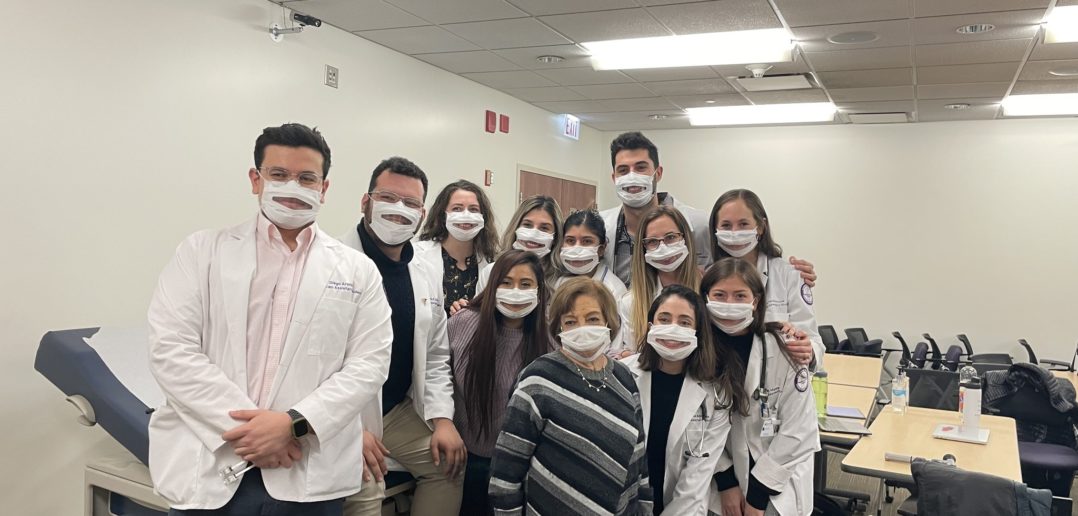
Feinberg medical students and students in the Physician Assistant (PA) Program can advance their Spanish speaking skills in a clinical setting by completing Medical Spanish courses in their respective programs.
All PA students are currently required to take the PA program’s Medical Spanish course during the spring trimester of their first year. Faculty leaders for the PA program’s Medical Spanish course are Kristine Healy, MPH, PA-C, associate director of the PA program and assistant professor of Medical Education, and Elizabeth Randolph, ’12 PA-C, instructor of Medical Education.
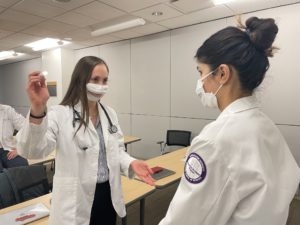
The MD program has offered an online Medical Spanish elective for the last two years and this spring, has begun offering an in-person Medical Spanish elective for medical students. The MD program’s online Medical Spanish course, which utilizes the online learning platform Canopy, was co-organized by Feinberg’s Latino Medical Student Association (LMSA) and the Augusta Webster, MD, Office of Medical Education (AWOME). Jonathan Moreira, MD, assistant professor of Medicine in the Division of Hematology and Oncology, is the faculty advisor for LMSA.
“Several studies have shown that language concordance leads to improved health outcomes, and while our patients come from many different places and speak a multitude of languages, Spanish is one of the most spoken languages among patients with limited English proficiency. Medical institutions should work to increase representation of those who come from these communities, but also support medical Spanish programs to minimize disparities due to poor communication,” said Erika Arias, a second-year student in the Medical Scientist Training (MSTP) Program and a member of Feinberg’s LMSA chapter.
Monica Bianco, MD, assistant professor of Pediatrics in the Division of Endocrinology, leads the MD program’s in-person Medical Spanish elective.
“Studies have shown that there are improved health outcomes if the doctor speaks the same language as the patient. The Medical Spanish course is an opportunity to improve health equity and health outcomes in this growing U.S. population through medical education,” Bianco said.
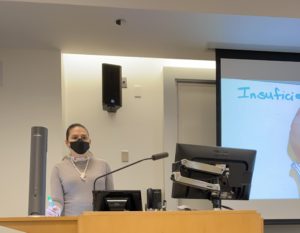
The PA program’s Medical Spanish course is tailored to each PA student’s level of proficiency in Spanish and is taught by faculty from the Spanish Department at the National Autonomous University of Mexico’s Chicago campus. During the course, PA students review medical Spanish vocabulary and practice interviewing and examining Spanish speaking patients through role-play and simulated telemedicine appointments.
“There is a great proportion of our patient population in the United States who speak Spanish. I think it is imperative that we as future providers have a basis for not only the many languages that we’ll come in contact with, but the cultural components that come with them,” said first-year PA student Diego Arenas, who is currently enrolled in the PA program’s Medical Spanish course.
PA students also learn about the different medical terms used in different Spanish speaking countries, how to explain common diagnoses, procedural consent, treatment plans and develop Spanish patient-education materials on culturally relevant health topics.
“Learning medical Spanish not only allows providers to offer equal care to Spanish-speaking patients, but it also creates a comfortable environment for patients to explain how they feel in their own words without worrying that something is ‘lost in translation’,” said first-year PA student Julia Masia. “After taking the course, I feel more comfortable in approaching patients who speak Spanish and am confident in my ability to ask appropriate questions when gathering history, performing a physical exam, and ultimately in providing culturally competent and quality care to my patients.”
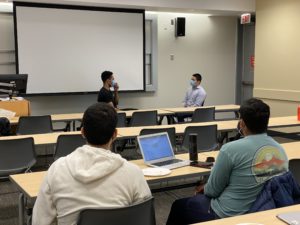
Medical students who take the in-person MD Medical Spanish elective also learn Spanish vocabulary and medical terms, and practice interviewing and examining Spanish speaking patients through simulated exercises with their peers. At the end of the course, students are invited to take the Spanish Clinician Cultural and Linguistic Assessment to become certified bilingual healthcare providers.
“The Medical Spanish course has improved my fluency and competence in Spanish communication. It has also provided me with resources for developing culturally sensitive medical communication strategies. As a result, I feel more confident in my ability to provide appropriate care to Spanish speaking patients,” said Ramael Ohiomoba, a fourth-year medical student who is currently enrolled in the MD program’s in-person Medical Spanish elective.

